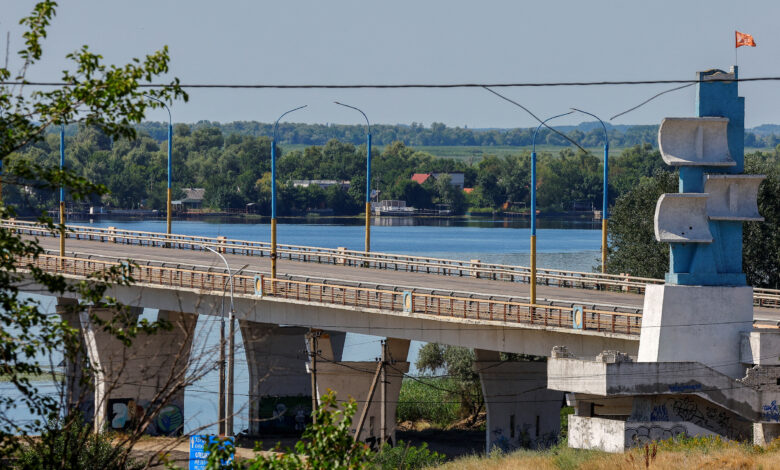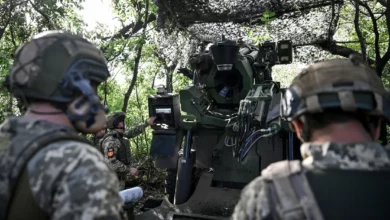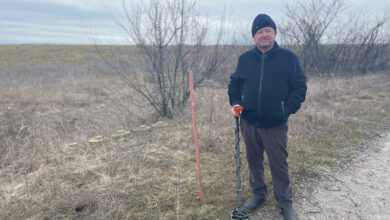
Ukrainian officials claimed that Russian troops can no longer carry heavy weapons and munitions across a strategic road bridge in the Kherson region after it was repeatedly struck by long-range Ukrainian artillery.
Serhii Khlan, adviser to the head of Kherson civil-military administration, said the Antonivskyi bridge, which is about 1,000 meters (3,280 feet) wide, “used to be the main route for the supply of weapons, ammunition and food to the Mykolaiv front” for Russian forces.
But “the strikes on the bridge were accurate,” he said. “The new hits were at the exactly those spots that were hit before. This made it impossible for any type of transport to cross the bridge. At the moment, the entrance to the bridge is blocked.”
Ukrainian officials said the bridge was hit on Tuesday night. Social media video also showed large detonations in a cluster toward one end of the bridge.
“Hypothetically, the Russians might be able to build a pontoon crossing. However, the left bank of Dnipro almost entirely consists of floodplains and swamps,” Khlan said.
The Russian-appointed deputy head of the Kherson region, Kirill Stremousov, said via Telegram that ferry crossings from near the bridge were already underway, adding, “just come here to the bridge and you will definitely get to the opposite bank of Dnipro.”
On Thursday, the UK’s defense ministry said that Russia’s 49th Army, which is stationed on the west bank of the Dnipro river, “now looks highly vulnerable” after Ukrainian long-range artillery hit a total of three bridges.
“Kherson city, the most politically significant population centre occupied by Russia, is now virtually cut off from the other occupied territories,” the ministry said.
However, the Russians still control large areas to the northeast of the city and may be able to resupply forces on the west bank with pontoon bridges and river ferries across the Dnipro.
Khlan also said that “a month ago, the invaders used the railway bridge. They brought whole trains to Kherson and to the right bank (of the Dnipro river) of military equipment and weapons. After the ammunition depots located near the railway bridge were destroyed, the occupiers stopped using the railway bridge.”
As a result of the damage to the Antonivskyi bridge, Khlan said that “the detour for civil transport is via the hydroelectric power station through Kakhovka; a lot of cars have accumulated there.”
The bridge at Kakhovka upstream from Kherson is smaller than the Antonivskyi.
Khlan also referenced reports that a police vehicle in Kherson was attacked with an explosive device Wednesday, claiming that “the resistance movement in Kherson is gaining momentum. This is the result of their work.”
Dmytro Butriy, temporary acting head of Kherson region military administration, said the attack on the police car had been carried out by a radio-controlled explosive device and had killed one policeman.
Butriy said attacks against Russian positions in Kherson continued. “Our aircraft made five strikes on the enemy. Pairs of attack aircraft and a bomber hit three enemy strongholds,” he said.
He also claimed that Russian occupation authorities had announced a ban on the Ukrainian currency hryvnia. “The so-called occupation ‘police’ are walking around the market and warning people who sell cash that they will be punished for issuing hryvnias,” he said.




